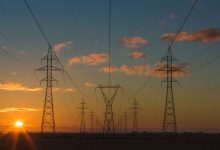New rules are set to ease the path for the creation of renewable energy zones, providing greater recognition of generators, such as wind and solar projects, that are clustered around a single connection to the wider electricity network.
The energy market rule-maker, the Australian Energy Market Commission, has proposed a new set of reforms that will allow for better recognition of circumstances were privately owned network infrastructure is shared by multiple generators and used to connect to the same part of the transmission network.
Under the existing rules, power stations connecting to the same part of the grid, sharing some of the same infrastructure, can often be regulated as though they were a single generator connecting to the network at a single point. The AEMC says that this can lead to complexities in the application of technical standards and the operation of generator dispatch systems.
The proposed new rules would allow for greater individualised recognition of generators that are sharing network connection infrastructure, and may help avoid more situations where wind and solar projects are ordered to curtail output or cease generating altogether, due to system stability concerns.
The rule changes are relatively technical in nature, addressing concerns around standards and dispatch arrangements and are additional to the more contentious, COGATI reforms that have been developed by AEMC around the cost of sharing network infrastructure.
The AEMC’s proposed COGATI reforms, which could see new wind and solar projects lumped with the costs of new network infrastructure has faced immense opposition from wind and solar developers and have called on the Energy Security Board, currently considering the reforms, to ditch it altogether. The AEMC, however, is ploughing on, and is due to present a proposal to energy ministers next month.
However, the latest set of proposed rules are likely to make it easier to establish renewable energy zones were multiple wind and solar projects are clustered within the same parts of the transmission network.
“Our proposed changes make it easier for multiple parties in close proximity to each other to share assets while at the same time protecting the security of the power system,” the AEMC’s Acting Chair Merryn York said.
“This is helping more generators and large users connect to the grid and in effect creates mini REZs. While larger REZs will have to operate in a different way, these changes are an initial step that will introduce REZ-style thinking into the power system.”
A growing number of state governments have announced plans to establish renewable energy zones, coordinating network infrastructure investment with the construction of new wind, solar and storage projects.
On Tuesday, the Victorian government allocated $540 million in its budget to support the development of up to six renewable energy zones across the state. The funding follows similar commitments from the Queensland and New South Wales governments, with more than a dozen renewable energy zones now in the works.
The Australian Energy Market Operator (AEMO) had requested the rule change, which would allow for a greater ability for generators to be treaty individually, including through individual technical standards and participation in the generator dispatch system.
The proposed rules will recognise ‘dedicated connection assets’ and their connection points, allowing technical standards to be applied across multiple projects. Privately-owned ‘dedicated connection assets’ that are more than 30km in length would be regulated as though they were part of the transmission network.
Additional changes would allow such ‘dedicated connection assets’ that have been specially designed to support multiple connections, and the creation of ‘mini renewable energy zones’, to retain special access rights, which would allow for continued control and coordination by private owners over how generators are able to connect to the shared network infrastructure.
The AEMC says that the change will allow for improved system stability while recognising that there is an increasing need to coordinate and share network infrastructure as new wind and solar projects are
“As the energy system transforms and more generators are seeking to connect, the potential to share power system assets is increasing. So, we need to ensure this change can be accommodated. This draft rule is part of our broader work – and the Energy Security Board’s work – to keep the many moving parts of the power system up to speed with the fast-paced transition underway,” York added.
The AEMC is receiving submissions on the proposed rule change through to 28 January 2021 and flagged that the Energy Security Board will also commence its own consultation on other reforms designed to assist the creation of renewable energy zones.










